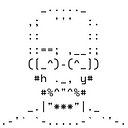I work with architects these days and the design process of apartments, buildings and spaces is in general very similar to what we, designers in the world of digital, do each day — with few exceptions.
A few examples that correspond to this fantastic article by Jared M. Spool (read it as I will be using deliverables and artifacts in respect to the article):
- For architects the final deliverable is a blueprint (or a series of blueprints) — usually a line drawing showing mostly dimensions and outlines (structure) of the objects, spaces and buildings. Those blueprints are accompanied by specifications.
- Sketches, 3D renderings, little and big models, samples of materials are artifacts. Those artifacts represent a far higher fidelity and are a lot more tangible than the blueprints.
- Artifacts are used to create a holistic picture of the final creation so that a deliverable can be complete (in terms of all the choices that need to be made).
- Artifacts and deliverable for us (digital) and for them (architects) are somehow inverted.
In architecture a blueprint (our wireframe or a prototype) is a manifestation of all the knowledge and decisions made during the design process. The ultimate, final deliverable is, of course, the standing building or organized space, but most work and thinking is done before a blueprint. Blueprints are handled to construction companies and from that moment architects are overlooking the process, changing things on the go.
In our craft we are too often using wireframes and prototypes as deliverables for a fraction of the process and for the decision a design team makes (or even only one designer makes). We call artifacts deliverables too often.
I believe that a wireframe as a deliverable, even if presented as gray boxes and a bit (very, very tiny) of lorem ipsum, must be supported with knowledge and decisions about visual layer, content strategy, front-end technology features and communication with a database. Wireframe as a deliverable is not a product of UX Design team, it is a product of all the people working on and for the project. Just as a blueprint is not only an architect’s vision, but a specification that includes material knowledge, urban planning, aesthetic and ergonomy of the spaces, way finding and all the other elements that are part of the final building or a space.
